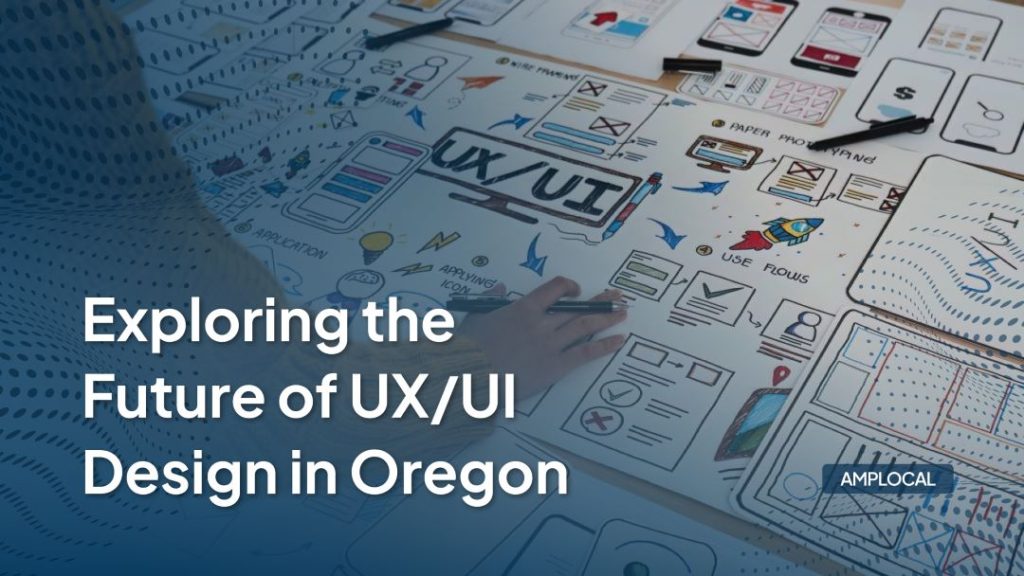In a world where technology evolves at an unprecedented pace, staying ahead in the field of UX/UI design is crucial. For businesses and designers in Oregon, from the tech hubs of Portland to the creative communities in Medford and the Rogue Valley, understanding the future of UX/UI design in oregon is key to maintaining a competitive edge. This blog post delves into what the future holds for UX/UI design in Oregon and offers practical, user-friendly advice to help you stay ahead of the curve.
The Evolution of UX/UI Design in Oregon
The future of UX/UI design in Oregon is poised for dynamic changes, influenced by emerging technologies and shifting user expectations. As we look forward, the integration of AI and machine learning in UX/UI design processes is becoming increasingly prevalent. These technologies are not only enhancing user experiences through personalized interactions but are also streamlining design processes, making them more efficient.
In Oregon, where innovation is part of the state’s DNA, companies are increasingly adopting these advanced technologies. This adoption is helping designers in Medford, the Rogue Valley, and beyond create more intuitive and engaging digital products.
Key Trends Shaping the Future of UX/UI Design
1. Enhanced Personalization
Personalization is at the heart of the future of UX/UI design. By leveraging data analytics and behavioral insights, designers in Oregon can create more relevant and tailored experiences for users.
2. Accessibility and Inclusivity
A significant focus on accessibility is shaping the future of UX/UI design. Ensuring that digital products are accessible to all, including people with disabilities, is not just a trend—it is becoming a standard that reflects the values of inclusivity prevalent throughout Oregon.
3. Voice User Interfaces (VUIs)
As voice technology becomes more sophisticated, VUIs are becoming an integral part of UX/UI design. This shift is especially relevant in Oregon’s tech-savvy markets, where users are quick to adopt new technologies.
Staying Ahead with Cutting-Edge UX/UI Design in Oregon
To remain competitive in Oregon’s fast-paced digital landscape, embracing continuous learning and staying updated with the latest design tools and methodologies is crucial. Participating in local UX/UI conferences, workshops, and community events in places like Medford or the broader Rogue Valley can provide valuable insights and networking opportunities.
Conclusion: Embrace the Future Today
The future of UX/UI design in Oregon offers exciting opportunities for businesses and designers alike to innovate and create compelling digital experiences. By staying informed about the latest trends and incorporating advanced technologies, you can ensure that your designs not only meet but exceed user expectations.
Ready to take your UX/UI design to the next level? Visit our website for more insights and expert guidance on staying ahead in the ever-evolving world of digital design.
FAQs About the Future of UX/UI Design
- How will AI impact the future of UX/UI design in Oregon?
Artificial Intelligence (AI) is set to revolutionize the future of UX/UI design by enabling more personalized user experiences. In Oregon, designers are utilizing AI to analyze user data and predict user behaviors, thereby creating interfaces that are not only more intuitive but also highly customized to individual needs. This ability to tailor digital experiences in real-time is making UX/UI design even more effective at driving user engagement and satisfaction.
- Why is accessibility a focus in the future of UX/UI design in Oregon?
Accessibility is becoming a pivotal aspect of UX/UI design, particularly in Oregon where there’s a strong emphasis on inclusive values. The future of UX/UI design in this region is focused on creating digital environments that are usable by everyone, including people with disabilities. This involves implementing design principles that accommodate a wide range of physical and cognitive abilities, thereby ensuring that all users can navigate, understand, and interact with digital content effectively.
- What is the role of Voice User Interfaces (VUIs) in the future of UX/UI design?
Voice User Interfaces (VUIs) are becoming increasingly important in the UX/UI design landscape, especially as the technology behind voice recognition continues to advance. In the context of Oregon’s tech-forward communities, VUIs offer a hands-free, efficient, and often safer way to interact with technology. This is particularly pertinent in environments where manual interaction is inconvenient or impossible, such as while driving or cooking. Integrating VUIs into digital products is a growing trend that aligns with the future of UX/UI design, enhancing accessibility and user convenience.
- What resources can help Oregon designers stay on top of the future of UX/UI design trends?
For designers in Oregon looking to keep up with the future of UX/UI design, a variety of resources are available. Engaging with local tech meetups, subscribing to UX/UI design newsletters, and participating in webinars hosted by industry leaders can be incredibly beneficial. Additionally, Oregon offers numerous professional development opportunities through workshops and conferences, such as the Portland Design Conference, where professionals can learn about the latest tools, techniques, and theories in UX/UI design.
- Why is personalization increasingly important in the future of UX/UI design?
Personalization is a key trend shaping the future of UX/UI design as it directly influences user satisfaction and conversion rates. By tailoring user experiences to individual preferences and behaviors, designers can create more engaging and effective websites and apps. In Oregon, where there’s a diverse user base with varying needs and preferences, personalization allows businesses to connect with their audience in a more meaningful way, ensuring that the digital products are relevant and appealing to each user. This customization not only improves user engagement but also enhances loyalty and conversions, making it a critical element in the future of UX/UI design.




